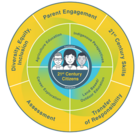Currents4Kids.com / Infos-Jeunes.com is an engaging, online interactive current events resource for students in grades 3 and up.
*Download free articles/activities from recent issues of Building Bridges (grades 5 and up), The Canadian Reader (grades 3 and up) & What in the World (grades 5-10)!
This 21st century teaching and learning tool explores local, national, and international news stories. It works across all platforms, from iPods to iPads to desktop computers, allowing teachers and students to make meaningful use of the Internet whenever – and wherever – they choose.
C4K is published once per week (except over Christmas and Spring Break) from mid-August until mid-June.
Key features of this exciting new resource include:
-Weekly articles
-On-the-Lines and Between-the-Lines quizzes
-Comment page
-Links to relevant articles, resources, maps, photos and videos
-Suggested activities including pdfs of the articles and quizzes
A subscription will help you to:
-Encourage non-fiction reading by providing age-appropriate, leveled, engaging and relevant text.
-Build students' vocabulary and background knowledge.
-Make better use of technology and time.
-Provide students with an opportunity to express their opinions in a safe, structured environment and allow them to read what other students their age say on the same topics.
-Save time by automatically grading quizzes and allowing teachers to manage writing assessment online.
-Most of all, excite your students about their world, and what's happening in it!
How it works: Access for a full school year (10 months) costs $230 per school; after receiving access to the site, the subscriber may invite all the other teachers within the same school to join their account. Teachers can then create classes listing their students.











